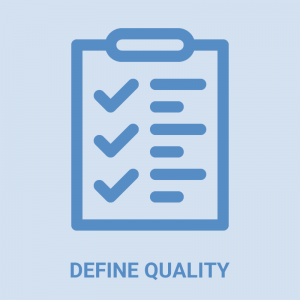Standards are critical to nurturing a child’s learning and development.

Early learning and development standards (ELDS) are critical to quality, offering programs guidance and helping ensure the full range of areas essential to children’s learning and development is addressed. In 1991, the National Education Goals Panel[1] identified five areas of child development comprehensive standards: children’s physical well-being and motor development, social/emotional development, approaches toward learning, language development, and cognition and general knowledge.
To be useful, ELDS should be tailored to educating preschool-aged children, appropriate for their level of development as well as vertically aligned with state standards for both infant and toddler care and early elementary grades such as K-3 standards–which in turn should be aligned with state academic standards or career and college-ready standards.
These standards should be responsive to children’s diverse cultural and language backgrounds, and horizontally aligned with child assessments and curriculum implemented in the pre-K classroom. In order to support the use of the ELDS, pre-K programs need to have access to resources along with professional development opportunities. Support is needed for selecting or adopting curriculum that is aligned with the ELDS and then guidance for curriculum implementation with fidelity may come in the form of teacher training, ongoing technical assistance, or additional funding.
Suggested Talking Points about Supported and Aligned ELDS:
- Clear, specific Learning and Development Standards can help teachers recognize where a child is on the developmental continuum and if additional screening or referral is needed.
- Learning and Development Standards should reflect research and lessons about effective practices.
- Learning and Development Standards alone cannot produce classroom quality. They must be used by educators and supported through state budgets, curriculum alignment, and child assessment selections.
- Learning and Development Standards should cover multiple domains of learning, as well as be (1) vertically aligned (with K–3 or college & career ready standards and infant and toddler standards) and horizontally aligned (with child assessments), (2) supported (though professional development and/or additional resources), and (3) culturally sensitive. (NIEER)
- Cultural sensitivity is key to creating a welcoming environment, teaching respect for diversity, supporting children’s ties to their families and community, and promoting second language acquisition and preservation of children’s cultural identities. Linguistic and cultural diversity is an asset, not a deficit. (NAEYC)
- Most states have culturally sensitive Learning and Development Standards. However, unless teachers are supported in achieving them, such standards are unlikely to lead to effective practice.
Quotes from National Experts
“Young children’s learning and development depend on the educational qualifications of their teachers.” Diane Schilder, Ed.D., Education Development Center, Inc.
“Today, educators and leaders are faced with the challenge of building a developmentally appropriate primary school without sacrificing the academic rigor needed to support young children in achieving success in school and beyond.” Shannon Riley-Ayers, Ph.D., Associate Research Professor, NIEER
CEELO and NIEER Resources about standards
- Primary Education Quality Presented to NJASCD Early Childhood Summit (2017)
- New Early Childhood Indistar Indicators Webinar (2014)
- Child Outcome Standards in Pre-K Programs: What Are Standards; What Is Needed To Make Them Work? (2004)
[1] National Education Goals Panel (1991). The Goal 1 Technical Planning Subgroup report on school readiness. Washington, DC: Author.
